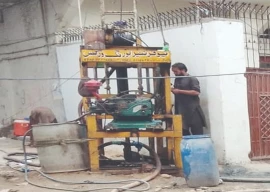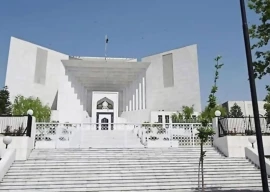
In their brief but tyrannical rein over Swat, the Taliban shot and publicly flogged schoolgirls; they destroyed schools, CD stores and barbershops, and conducted public beheadings. With all that terror, it’s understandable that the mortal damage sustained by Swat’s cultural heritage was overlooked, but it isn’t any less forgivable. Fazal Khaliq’s new book meticulously documents that heritage, and provides a stark warning about the threat it is currently under.
Khaliq begins Swat’s story in his book, The Uddiyana Kingdom: The forgotten holy land of Swat (Shoaib Sons 2014), before the Common Era, when the region, known as the Gandhara civilisation, overlapped with surrounding civilisations, all of whom laid a claim to Swat’s fertile soil, its crystal streams, and its snow-capped mountains. Buddhism was central to the region, and Khaliq puts in tremendous effort to highlight the stupas, the rock carvings and paintings, and ruins of entire compounds that once ruled the land. Swat, Khaliq points out, was instrumental in spreading Buddhism from the plains of India to the far shores of China and Japan. But like all ancient civilisations, it was partly gutted, and partly renewed; the spread of Islam and the resurgence of Hinduism maintained the diverse and dynamic social fibre of the land, while its location and fertile soil buoyed it economically.
Temples and cultures have been destroyed everywhere throughout history; looting and pillaging were the unquestionable norms until very recently. Khaliq mentions Mahmud Ghaznavi’s marauding hordes who destroyed temples, already centuries old by the time they arrived, wherever they found them. But Khaliq implies that Swat’s history has never faced a more existential threat than the religious extremism of today. More than once he makes the analogy between the Buddha statues at Bamiyan, Afghanistan — the largest in the world — and their ignominious destruction with the similar, yet lesser known, Buddha statues in Swat.

Khaliq starts his book with the personification of a disfigured Buddha, who claims his innocence against the damage done to it. It isn’t just the physical damage sustained; the idea of cultural preservation itself is under threat. A sustained campaign of labelling priceless artifacts ‘un-Islamic’ has deterred the local populace from maintaining, and even visiting these precious sites. Khaliq elaborately (and unnecessarily) takes out passages from scripture to dispel the notion.
Religious stigma doesn’t excuse the government’s criminal negligence towards its heritage either. Rock paintings are being plastered over; sculptures, quarried; sites, encroached. Hardly any interest has been shown by government, or even by Pakistani archeologists in excavating or exploring further. (Most of Khaliq’s sources are, strangely, Italian. One of the pictures was of the Italian ambassador visiting the newly restored Swat museum, which the Italian government funded.)
It is perhaps, a sad state of affairs that the country needs reminders from foreign archeologists to tell us how valuable our artifacts are. One expert chimed in, saying “without exaggeration” that he sees Swat’s precious relics disappearing within “the next decade”.
Throughout the book, Khaliq has a few constant priorities in mind. He laments how many tourists Swat could have attracted and the idea of a pluralistic Pakistan that could have been established. Still, the book is not a jeremiad. To be honest, it’s a struggle to identify what exactly it’s made for. Its exposition is scholarly, quoting academic papers and experts, but it has no footnotes. It has a conclusion, but not a thesis. It has policy proposals, but little analysis. It flits between reading like a Pakistan tourism brochure (I counted at least six mentions of ‘scenic beauty’ in the first 50 pages) and a travelogue. It seems the author has much emotion to express, but stopped himself at the risk of objectivity, of which, despite his best efforts, there is little. And that is not a bad thing. It’s indeed quite heartening to see a local care deeply for his home and fret for its future. The author would have done well to have taken a more personal tone in his writings, allowing that emotional attachment to come through.
The emphasis on tourism dollars could also have been better teased out; universally, tourism carries an inherent threat to the places it seeks to popularise. Given the lack of infrastructure and care, how could tourism help the sites being preserved? Of course it is possible, but the writer does not explain how. Instead, he falls back on generic proposals regarding ‘awareness’ and ‘education’ that would do little to stir bureaucrats and activists.
The book does, however, succeed in stirring holidaymakers. Swat’s natural beauty is well-known throughout Pakistan, and many tourists, even after the advent of militancy, visited the region for sightseeing purposes. Its heritage is less well-known, but Khaliq convinces the reader that its history alone is ample and fascinating enough to attract everybody, let alone tourists. There was never a greater need to restore Swat to its greatness, and Khaliq emphatically drives that point home.
Published in The Express Tribune, December 28th, 2014.
Like Life & Style on Facebook, follow @ETLifeandStyle on Twitter for the latest in fashion, gossip and entertainment.


















COMMENTS
Comments are moderated and generally will be posted if they are on-topic and not abusive.
For more information, please see our Comments FAQ